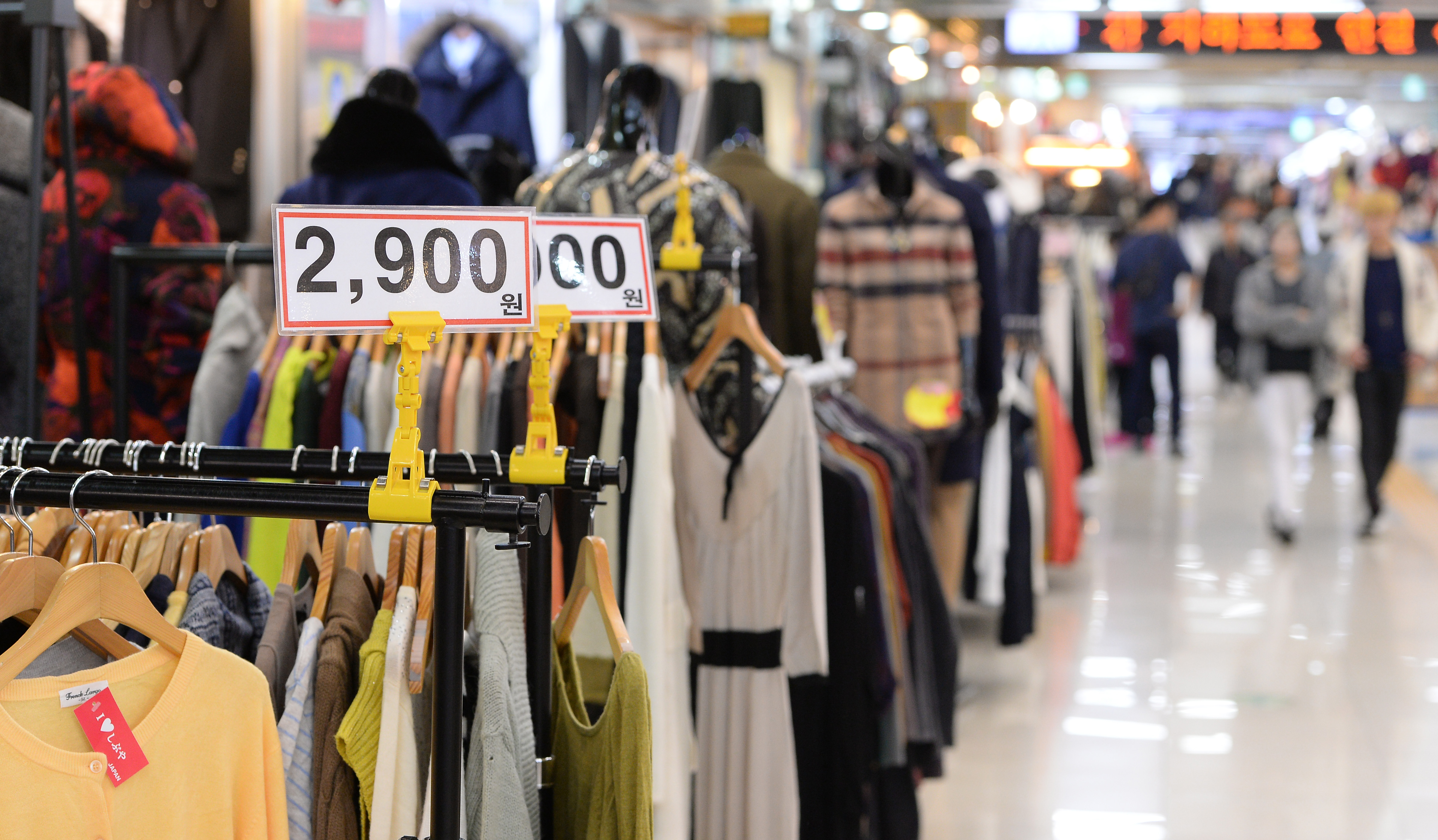[July] Korea is a bustling shopping mecca below ground
Date Jul 06, 2021
 Underground shopping mall in Yeongdeungpo District, Seoul. Korea Times file
Underground shopping mall in Yeongdeungpo District, Seoul. Korea Times file
●Affordable underground shopping malls and shops are replacing dark, dingy tunnels in Korea.
●Some underground spaces were originally intended as emergency bunkers against North Korean air raids.
Underground spaces in large cities are typically perceived as dark, dingy places that people use as shortcuts to their destinations.
But in Korea, underground spaces are home to gleaming and bustling plazas and streets packed with shops selling clothes, accessories, cosmetics and other products. Eateries, coffee shops and other stores selling desserts and snacks can also be found in underground shopping zones. Often connected to major subway stations, they are frequented by people from all walks of life, ranging from commuters and students to tourists.
Compared to the shopping malls above ground, these subterranean zones have created a unique shopping culture with a wide selection of affordable yet trendy items that grab the attention of passers-by heading to subway stations. Unlike the shopping malls overhead where credit cards are used as the main payment methods, some underground stores only take cash.
These underground shopping districts vary in size, depending on location, and the largest ones surpass expectations. The shopping mall in Incheon’s Bupyeong Station made it into the Guinness Book of World Records back in 2014 for hosting the largest number of shops underground. Far bigger than Seoul’s popular Express Bus Terminal Station that has some 600 shops and Gangnam Station with around 200 shops, this nearly 31,700-square-meter space is filled with more than 1,400 shops that entice as many as 130,000 subway commuters a day.
There are few, if any, official records of underground facilities in Korea. But one known fact is that the first-ever underground shopping mall in the country was the “New Seoul Underground Shopping Center” which opened in December 1967 in Euljiro 1-ga, near City Hall in central Seoul.
The 480-meter-long passageway quickly became a trendy, cutting-edge place for sharp dressers, and its popularity led to the establishment of more than 20 subterranean shopping centers in the 1970s alone, including ones in Inhyeon-dong in 1970 and Wangsimni in 1971.
Military tensions between South and North Korea spiked during the mid-1970s, following a series of North Korean provocations, including the slaying of U.S. Army officers in Panmunjom in 1976 and the 1978 discovery of the “Third Tunnel of Aggression,” a secret tunnel built by the North that extended into the southern side of the heavily-armed inter-Korean border.
A noteworthy point from this dark history is that some underground shopping malls in Seoul were originally designed and constructed as “emergency bunkers” to protect citizens against possible North Korean air attacks, primarily under the leadership of Seoul’s ex-Mayor Koo Ja-chun, who came from a military background.
But even beyond such defense-related functions, the commercialization of these underground spaces was also aimed at relieving traffic congestion above ground in major cities and to secure safer pedestrian zones.
Since the late 1990s, a number of underground spaces have undergone significant transformations. Major ground-level department stores and shopping malls – Starfield COEX Mall in Gangnam and Lotte World Tower and Mall in Songpa, to name a few – have started to expand underground, transforming the subterranean areas into “Cultural Complexes.”
Many municipal governments and cities are also looking for other innovative ways to utilize underground spaces. Their efforts include “metro farms,” an indoor farming method where plants can be cultivated in five of Seoul’s urban subway stations regardless of weather conditions; an underground mini-park designated as a “fine-dust-free zone” in Cheongdam Station; and an art gallery in Noksapyeong Station.
**If you have any questions about this article, feel free to contact us at kocis@korea.kr.**

The Ministry of Culture, Sports and Tourism's "Korea Here & Now" work can be used under the condition of "Public Nuri Type 1 (Source Indication)."




